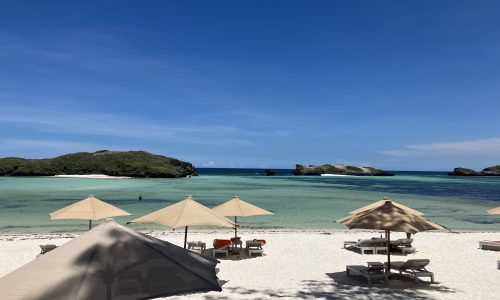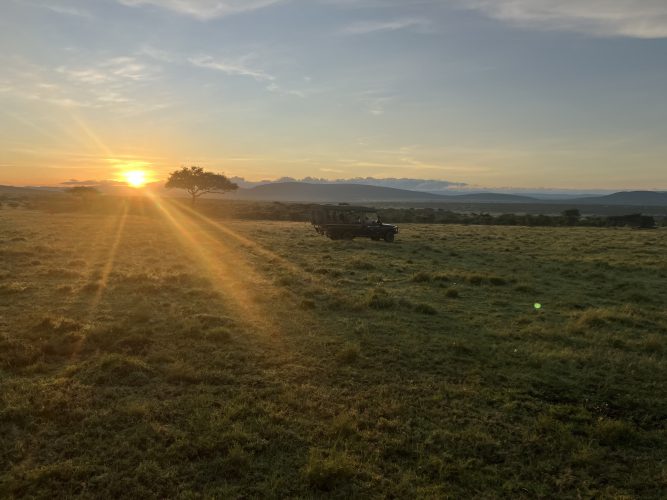After an entertaining, but sleepless night aboard my Kenya Airways flight (mercifully direct from JFK, New York) I was extremely grateful for the opportunity to catch my breath in Nairobi, and especially for the mild weather. I quickly sank to sleep cocooned in flowing mosquito netting, with the fragrance of Jasmine wafting through the open window. At the crack of dawn, I was nonetheless rudely awakened by the noisy quarrel of a croaking bush baby and a wailing tree hyrax. Yet as I sipped my coffee, watching a troop of monkeys cavorting around in the garden, I was reminded once again of Ernest Hemingway’s famous adage: “I never knew of a morning in Africa when I woke up and was not happy.”
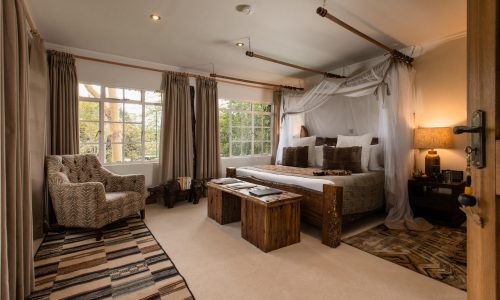
We were soon heading south to the Masai Mara Game reserve, and as exhilarating as our game drives and adventures would be, it was also extraordinarily calming. There had been a few early rains the week before, and the earth responded promptly, displaying that fresh green sheen that signals the end of the lean dry months and a new lease on life. Under a cobalt blue sky, all the animals seemed relaxed and content in anticipation of better days and easier living ahead. Among this natural order and tranquility, I felt as close as I could ever come, to knowing peace on earth.
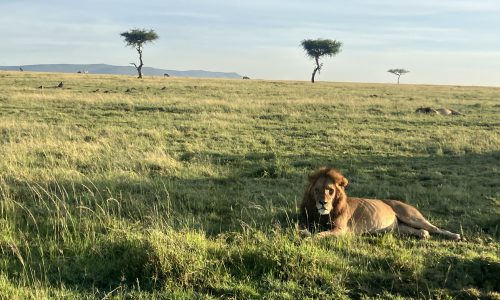
For the most part I left the photography to my companions, and enjoyed the freedom of letting my gaze flow over the glorious landscape and just drinking it all in. I was keeping a “running tally” though, and over the course of our stay we saw something of everything. Between a huge pride of lions and playful cubs on our first evening drive, and a stately family of elephants and calves surrounding a waterhole on our last morning, we found Zebra, Giraffe, Hippos, Hartebeest, Thomson’s Gazelle, Grant’s Gazelle, Impalas, Topi, Eland, Waterbuck, Wildebeest, Warthogs, Ostriches, Vervet Monkeys and Olive Baboons, Bat Eared Foxes and Silver-back foxes, Side Striped Jackal and Black-backed Jackal. I’ve never thought of myself as a “birder” but fascination with our feathered friends grows every time I go on safari, and was thrilled to recognize a few of my favorites: a gorgeous pair of Crowned Cranes, Blue Cranes, Marabou Stork, Open-billed stork, Saddle-bill storks, Fish Eagle, a Marshall eagle, Vultures, Kori Bustards, Secretary Birds, Superb Starlings, Hildebrand Starling, Silver bird, Canaries and Lilac breasted rollers.
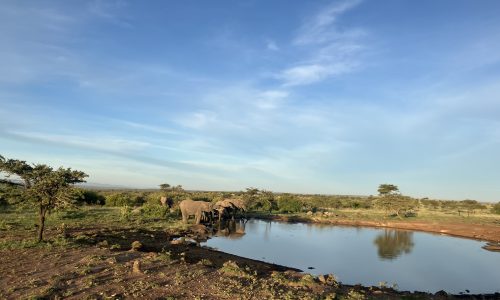
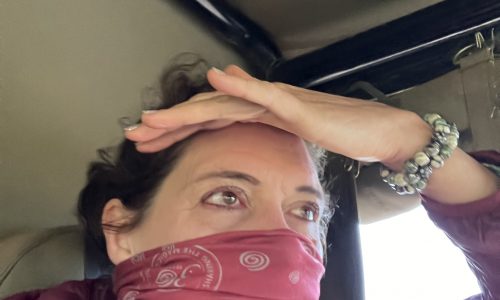
One of only nine camps in the 124-square-mile Naboisho Conservancy, the gorgeous Ol Seki Hemingways Mara offered a secluded retreat and an uncrowded safari experience. Set atop a hillside with sweeping views, the camp is named after the Ol Seki tree, meaning “blessed” in the Maasai language and the symbolizing peace. True to its name, the creation of the conservancy Naboisho, “coming together”, has likewise fostered harmony between local Maasai landowners, agriculture, and wildlife.
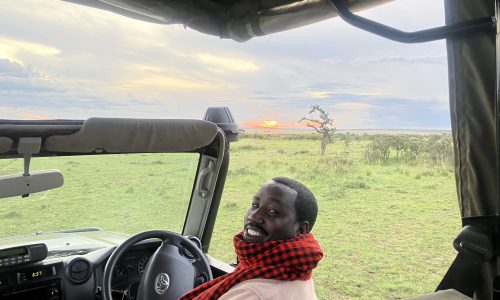
Before I knew it, we were waving to our wonderful guides and hosts again, and winging across Kenya to the East Coast, where our adventure would continue on the shores of the Indian Ocean. Midway between Lamu and Mombasa is Malindi, and about 30 minutes south of there, is Hemingways Watamu, the first hotel of the now famous collection. Classical elegance blended with casual contemporary touches, the hotel radiates a relaxed, airy, feel.
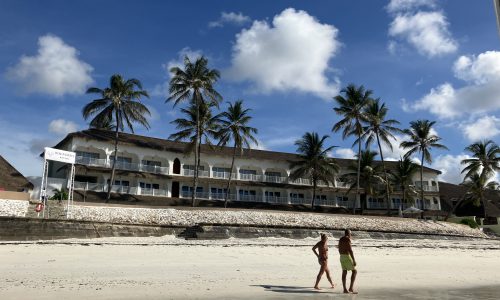
Our whirlwind visit included more than I could ever have imagined possible in such a short time. Between dips in the two pools — and of course the ocean on our doorstep — we enjoyed lunch at Gede Café, (a few very) happy hours at Hemingways bar, and dinner at the Brasserie. Since we were located inside a marine park, the waters around us were teeming with life — turtles, dolphins, tropical fish, and stunning coral gardens. Some of us enjoyed the world class Scuba diving, others found time to go dolphin watching and snorkeling. We visited Papa Remo restaurant on the celebrated “Love Beach,” enjoyed a fresh seafood dinner on a dhow cruise along Mida Creek and relaxed with lazy nightcaps on the overwater hammocks of the Lighthouse at Temple Point.
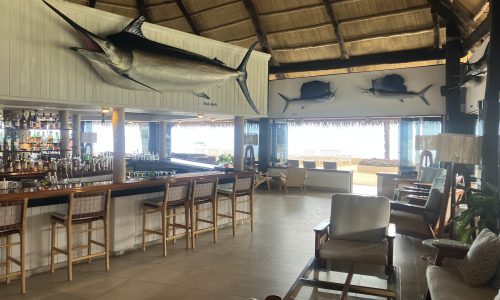
On our last morning I even managed a quick tuk-tuk ride into town to pick up some folding fans handmade from Kente cloth and leather, but alas – there was not enough time to see the Gede Ruins, (the remains of a Swahili town dating back to the 12th century), the cliffs and colors of Marafa Hell’s Kitchen, the glittering sands of the Mambrui Sand Dunes, or the biodiversity hotspot of the Arabuko Sokoke Forest Reserve.
So many reason to start planning another visit… Contact us to book your own “Bush and Beach” adventure!
